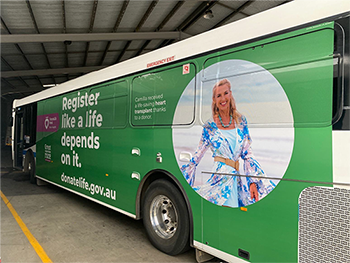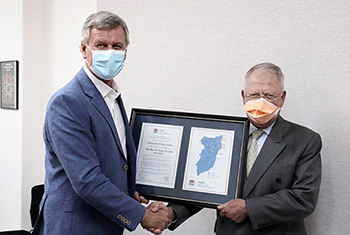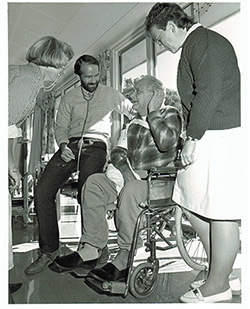Weaving war into art
I weave what I have seen: The War Rugs of Afghanistan, an exhibition at the ANU’s Drill Hall Gallery until 15 August 2021 and touring.
In the mid-1970s, when I was last there, the rug shops of Afghanistan’s capital Kabul stocked a treasure trove of handmade creations, notably the deep-red rugs and hall runners for which the country was, and still is, famous. The designs were abstract yet symmetrical, rarely featuring human or animal figures, or identifiable objects, certainly not guns and fighter aircraft.
But that has changed, as Afghan society at large has changed.
From late 1979, when the USSR’s troops entered the country to preserve a puppet regime, Afghanistan has been on a timeline of conflict that continues to this day, and the images of its unasked-for war have been recorded on an unusual tableau, its woven rugs.
These images include Russian tanks, some of them heading home after defeat, fighter aircraft, helicopters and the ubiquitous Kalashnikov AK-47. Throughout the 80s and beyond the rugs would come to document the Russian occupation, the Mujahideen resistance, America’s support for the self-serving warlords, and the Taliban that emerged victorious and gave sanctuary to Al-Qaida, the perpetrators of 9/11.
- Details
- Written by: Robin Osborne

Buses give a lift to 1-in-3 donation rate
Public buses in the Northern Rivers including nine in Lismore, are part of the campaign to boost our falling organ and tissue donation rate, currently standing at only 1-in-3 people Australia wide. Some 1800 patients are awaiting a life-saving donation.
Australia has recorded a 16 per cent decrease in the number of new donor registrations since 2019, partly due to the COVID-19 related cancellation of awareness-raising events across the country.
Northern NSW Local Health District nurse Camilla Jenal is excited to be the face of this year’s campaign, after receiving a live-saving heart transplant in 2012. After becoming so unwell with heart failure due to an autoimmune disease, Camilla required the assistance of a mechanical pump to keep her heart working.
- Details
- Written by: Robin Osborne

Northern NSW LHD appoints new Board chair
Incoming Board chair Mark Humphries with Dr Brian Pezzutti at the latter’s final Board meeting in June 2021.
After steering the Board of the Northern NSW Local Health District for the past eight years, Dr Brian Pezzutti has handed the reins to the current Deputy Chair, Mark Humphries, who has been a Board member since 2012.
Mr Humphries has extensive experience in senior management and leadership positions, and is actively involved in the regional community. He is a past president of the Kingscliff Chamber of Commerce and is involved with Surf Life Saving clubs in the area. He is also a member of the regional advisory committees for the Westpac Lifesaver Rescue Helicopter and TAFE NSW.
Mr Humphries will serve until December 2022.
- Details

Regional COVID-19 vaccinations nearing 100,000
The number of North Coast residents vaccinated against the coronavirus has now topped 98,000, according to Healthy North Coast /Primary Health Network, which has recorded a regional increase of around 22,500 vaccinations in its Tweed Heads to Port Macquarie footprint.
The most recent population count for the North Coast region was 477,693
The previous fortnightly increase was around 18,000, indicating that the uptake of the vaccine is gathering pace.
Over the same period, the weekly supply of the AstraZeneca vaccine to general practices has increased to 26,400. The number of vaccine doses available at Commonwealth Vaccination Clinics has been boosted and NSW Health has established vaccination centres at local hospitals, as well as a number of pop-up clinics.
- Details

Thirty-six years and out.
Rudyard Kipling noted there are only two kinds of men in the world - those who stay at home and those who do not. My peripatetic parents and subsequent upbringing meant I fell into the latter category.
Graduating from Aberdeen University saw me with a degree in medicine, but, unlike my peers, no idea what I wanted to do with it. Joining one of Scotland’s first General Practice Vocational Training Schemes, I passed the MRCGP in 1975, and during that time, I sat and - to my surprise - passed the first part of the MRCP. I passed the second part in 1980 and thought a year’s experience working as a Senior Registrar in NZ would be interesting. So Cate and I trotted off with a two-year-old and a 10-week-old. Cate had baby number three while I sat and passed the FRACP in 1982.
- Details
- Written by: Dr Hugh Fairfull-Smith
Page 34 of 177















